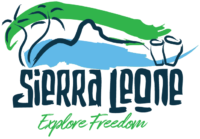If you’ve ever considered visiting Sierra Leone, I’m sure you’ve been wondering about the best time to visit. Our country is known for its beaches, forests and national parks, so visiting at the right time, with the right weather, is important to make sure you enjoy your visit the fullest – being stuck in endless rain is no fun, trust us!That’s why we’ve decided to put together this article, to give you all the information you need about the weather in Sierra Leone and how it changes throughout the year. Keep reading and let us know what you think!
Guide for the Best Time to Visit Sierra Leone
Weather in Sierra Leone - Intro
Sierra Leone is located about 1000 km north of the Equator – the latitude of our capital Freetown is 8°30’ North. As a result, the weather in Sierra Leone is hot and humid year round, but there are two distinct seasons – a wet and a dry season.
In Freetown and along the coast, the temperature stays between 23° and 30°C for most of the year (74-86°F). In the interior of the country, maximum temperatures can reach up to 35 or even 40°C (95-105°F) in the hottest months, and can dip as low as 18-20°C (64-68°F) during the night in the coldest months.If you’re considering visiting Sierra Leone to hike Mount Bintumani or any other peak in the Loma Mountains, be aware that the temperatures may dip even further during the night.
Weather in Sierra Leone - The Dry Season
As mentioned before, Sierra Leone experiences a dry and a wet season each year. The dry season extends from November to May, coinciding with the Northern Hemisphere winter – this is why Sierra Leone makes for a wonderful winter destination!Between November and January, the weather in Sierra Leone is largely dry and sunny, with maximum daytime temperatures hovering between 30-32°C (86-90°F), and decreasing to 20-24°C (68-75°F) during the night. The skies are usually clear and the sun shines high in the sky – it’s the ideal time to visit to enjoy the beaches, see wildlife and visit the national parks, go hiking, or experience other outdoor activities.January/February marks the beginning of harmattan season all over West Africa. The harmattan is a hot and dry wind blowing from the Sahara, often causing dusty, very hot conditions when temperatures may exceed 40°C (104°F). It’s still a good time to visit Sierra Leone, but be aware that you may not find clear skies and it might get uncomfortably hot.
Weather in Sierra Leone - The Wet Season
The arrival of the African Monsoon in April (Southern Sierra Leone) or May (Northern Sierra Leone) marks the beginning of the wet season. The first rains may occur as early as late March, and are often greeted as a blessing, as they bring much-needed respite from the extreme heat.The rains gradually start increasing, reaching their peak in July and August. Inland, the rainfall exceeds 250 mm (10 in) per month, whereas along the coast there are often fierce, destructive storms – for instance, in August Freetown receives up to 800 mm (31.5 in) of rain, and roads all over the Peninsula are often flooded.During the wet season, daytime temperatures reach between 25-28°C, decreasing to 18-22°C at night. These temperatures may sound inviting, but don’t forget it’s slightly cooler only because it does rain a lot!For this reason, it is best to avoid visiting Sierra Leone during the height of the rainy season. Even though it doesn’t rain all day long, and precipitation is usually concentrated over the span of just a few hours, the rains have the potential of washing down unpaved roads, making parts of the country extremely hard (or even impossible) to reach.On top of that, higher humidity brings an increased number of mosquitoes, making it more likely to catch malaria or other mosquito-borne diseases.So, what’s the best time to visit Sierra Leone?December and January are the months when the weather in Sierra Leone is at its best. Temperatures are hot but not unbearable, the sky is blue and it’s likely to be sunny. Whether you are planning to go to the beach, visit Tiwai or other national parks, or just experience the wonderful urban vibe of Freetown, these are the months that offer the best conditions.Harmattan season is also a good time to visit, as is the tail end of the rainy season (Apr-May and Sept-Oct) – just avoid the peak rainy months.Also, please remember that climate change is also part of everyday life in Sierra Leone, and whereas the patterns we described as usually reliable, rains might start earlier or later on different years.







 German
German